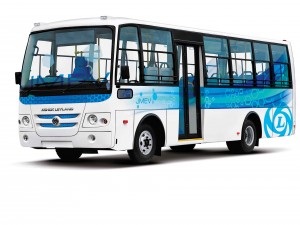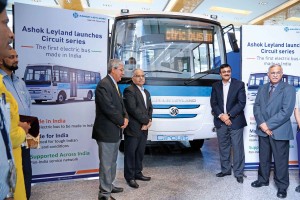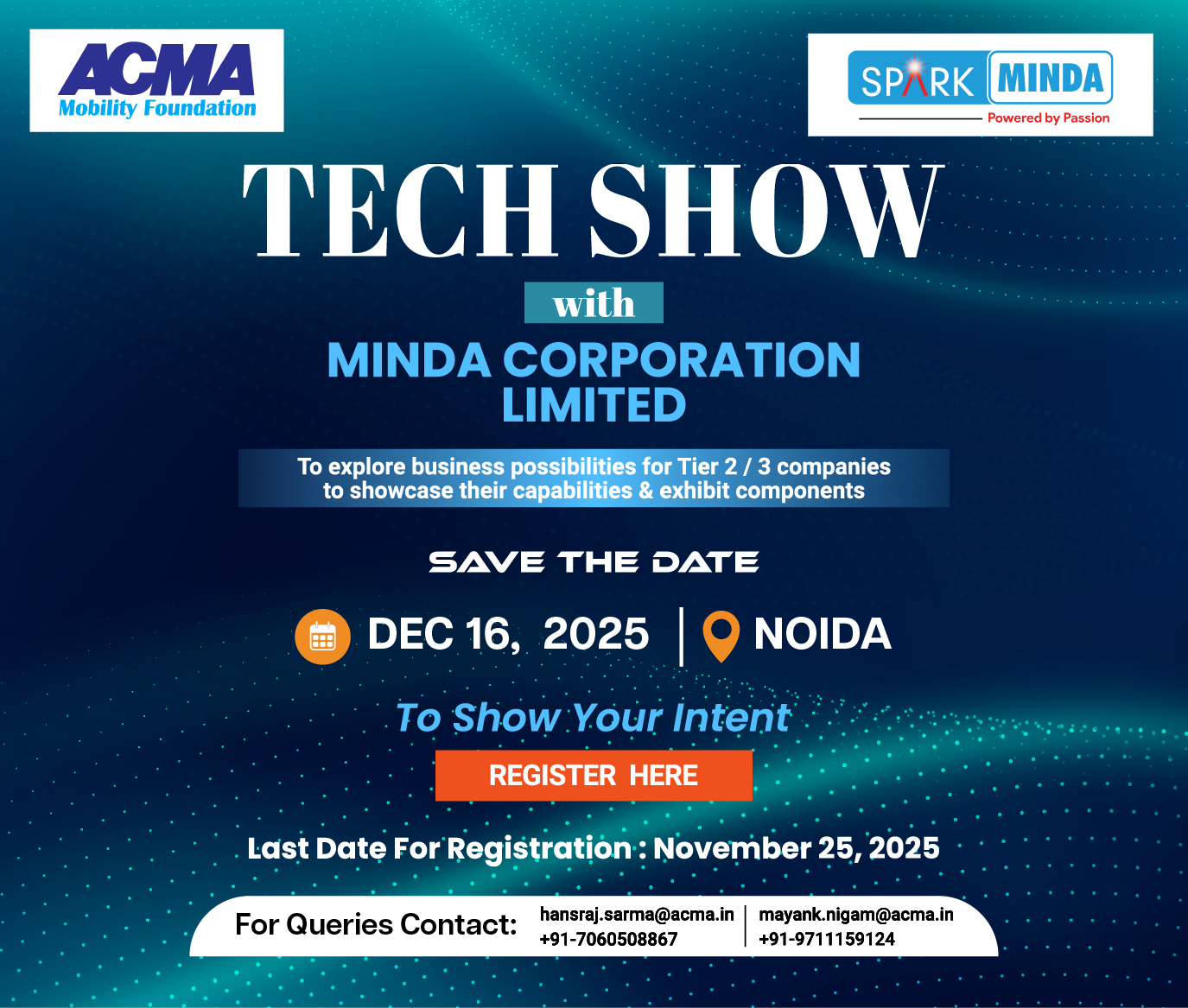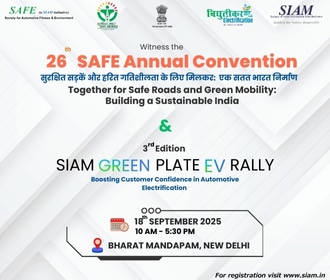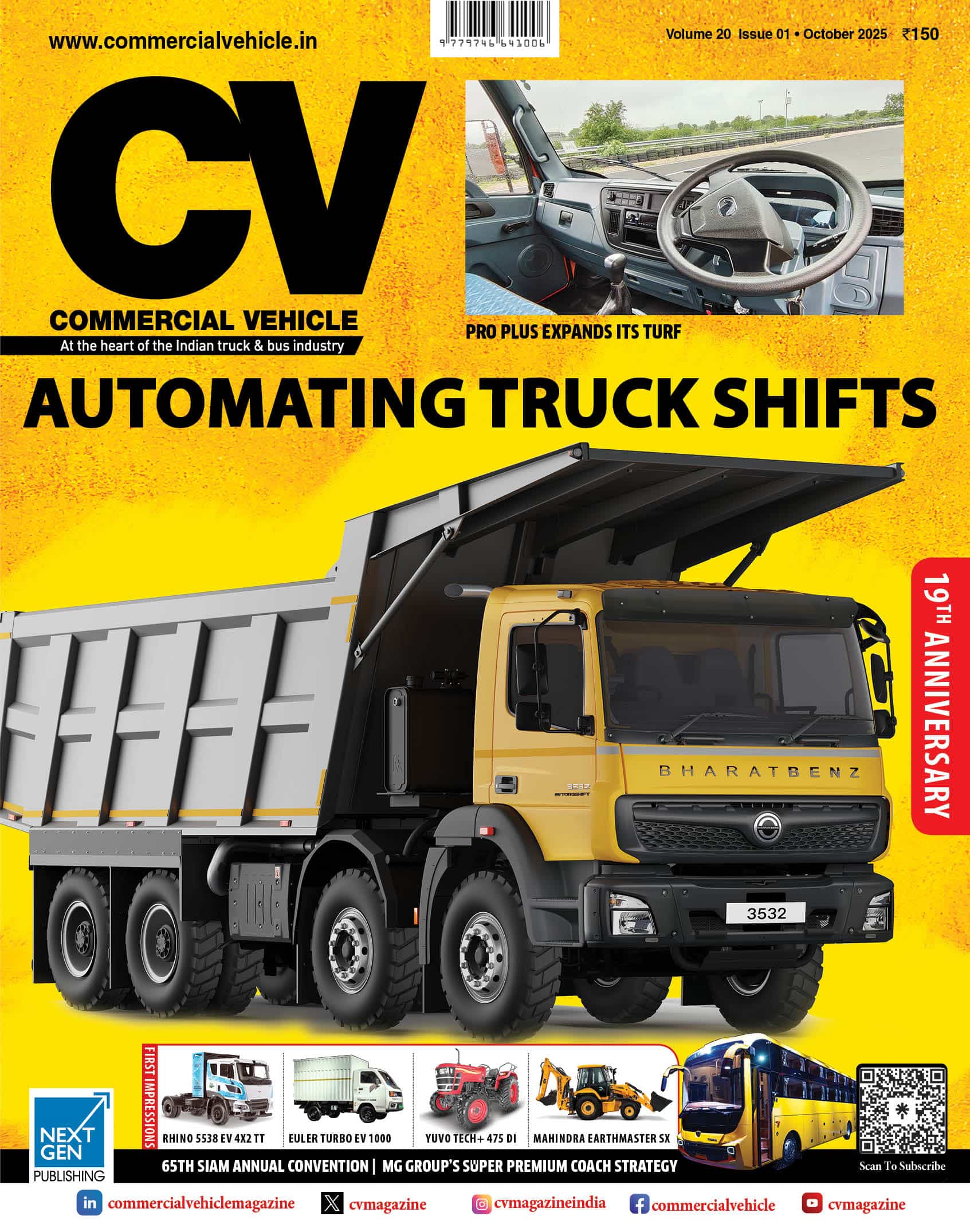Ashok Leyland has introduced an electric bus, developed indigneously for the Indian mass market.
Story by:
Anirudh Raheja
In a country where mass transit is by means of 1,50,000 diesel-run buses, often accused of attributing carbon dioxide and smog, Ashok Leyland has unveiled a new electric bus called the Circuit. Adding to the efforts of reducing global warming, the Circuit points at a rising transition towards alternate mediums of propulsion in India. Especially electric medias, and in particular buses, which form the backbone of India’s public transport despite the arrival of newer mediums like metro and monorail. Expected to contribute to the paradigm shift in public transportation in India, Ashok Leyland has indigneously developed the Circuit, a full electric bus, ahead of schedule. Unveiled at an event in Chennai, the Circuit bus series is a zero emission vehicle that was completely engineered in India. It was designed keeping in mind the Indian road conditions, and the prevailing load conditions. Varied topography along with usage was also considered. The Circuit thus has been built on a simple, mass-market platform, which aims to reduce operational and maintenance costs.
At the Circuit’s unveiling ceremony, Ambuj Sharma, Additional Chief Secretary, Industries and Commerce, Government of Tamil Nadu, expressed that the government aim is to ensure 20 per cent of the vehicles sold by 2020 should be electric or hybrid in nature. “Where the former will be pure electric, the latter can be mild or strong hybrid. Considering the upfront acquisition cost and running cost, there is a lot that matters. However, moving away from fossil fuels is the need of the hour,” he mentioned. The Circuit, according to
T Venkatraman, Sr. Vice President – Global Bus, Ashok Leyland, is part of the plan to invest Rs. 500 crore towards expanding the bus portfolio. The investment will be phased, and close to Rs. 22 crore have been pumped into the development of the Circuit, he added. Venkatraman revealed that all transport corporations are talking about procurement, and for each of them acquisition cost is important. “We already have three or four STUs which are actively under tendering. Once people see our ability to participate, they will come to us.”
Parts that make the Circuit
If the name ‘Circuit’ sounds unusual for an electric bus, it is also reflective of the change that it taking place in the Indian auto industry. Up to 40 per cent of the parts that make the Circuit are sourced locally. This excludes the Lithium-ion batteries. Their management is a proprietory tech however, and the IPR lies with Ashok Leyland aver sources. Equipped with an alert system that can signal if the bus is low on power, the Circuit has a 120 km travel range on a single charge under standard test conditions. While sources claim that the batteries are sourced from Ashok Leyland partners in the United States, they can be fully recharged in three hours according to Venkatraman. Averred Venkatraman that it is not about usage but about battery management that is important. This, he added, will need to be monitored for charging and discharging of the batteries as part of the vehicle’s usage cycle. “The material can come from anywhere, the whole intelligence of managing the battery is an electronic control knowledge,” opined Venkatraman. The batteries of Circuit, claim sources, are capable of lasting up to seven years depending upon their usage.
Platform strategy
The Circuit bus is part of a platform strategy that will spring new variants and more buses claim industry sources. It would all depend on the requirement, they add. According to Venkatraman, it is possible to make an electric bus with 65-70 seats. However the amount of batteries it will require will simply make it prohibitive, he added. The dimensions, body specifications, and grade-ability of Circuit comply with Urban Bus Specifications II set by the Ministry of Urban Development, Government of India. Developed with technological inputs from Ashok Leyland’s UK subsidiary Optare, which is looked upon as a pioneer of electric buses, the Circuit can seat 31 people excluding the driver. The seating layout is a classic 2×2. Attention has been given to ergonomics. The driver cockpit has been designed to ensure a comfortable drive. From the passenger point of view, a big change is going to be the near noiseless travel. The Circuit emits 78dBA of noise, which is considerably less than the 85dBA noise a conventional diesel bus in the same class emits. The Circuit features on-board wi-fi and USB mobile charger for the convenience of the passengers.
The system
At the heart of the Circuit is a motor. It is coupled to a propeller shaft and the differential. Capable of attaining a top speed of 75 kmph, the Circuit is currently available without air-conditioning. Designed and engineered with a payback period of up to five years, an air-conditioned version will be offered upon demand. Built at Ashok Leyland’s plant at Alwar, Rajasthan, and at Viralimalai, Tamil Nadu, the Circuit, according to Venkatraman, can be rolled out in three weeks from either facility. With focus on cost competitiveness, the Circuit, according to Venkatraman, will be made specific to order. It will, he added, make a good medium for transport at heritage locations and in hilly areas. Sale of 50 units in the current fiscal has been envisaged. The plan is to take this number to 200 units next year. With government offering the subsidy under the Faster Adoption and Manufacturing of (Hybrid) and Electric vehicles (FAME) scheme on a first-come-first serve basis, the onus will be on the STU to engineer a proposal, and seek the subsidy to procure an electric bus. Industry sources claim that the Circuit will be priced in the region of Rs. 1.5 crore.
Slow, but picking up
The FAME scheme to promote electric and hybrid vehicles received much applause. Its allocation has been subject to scrutiny and criticism. The allocation is said to be not enough. If the FAME has been encouraging for manufacturers to jump on the electric (and hybrid) bandwagon, the need to develop technologies indigenously is calling for more support. For every diesel bus replaced by an electrically propelled one, a whopping 25-tonnes of CO2 emissions can be reduced every year. As per the study by Indian Institute of Science (IISC) that undertook the evaluation of electric vehicles for urban transport, electric buses generate 82 per cent more profit over diesel buses. Revenues too can see a 27 per cent hike. The Circuit electric bus provides Ashok Leyland an opportunity to tap into the FAME scheme, which was launched in April 2014 by the central government, and is part of the ambitious National Electric Mobility Mission Plan (NEMMP). Under NEMMP, the government aspires to put seven million electric and hybrid vehicles on the roads of the country by 2020. Claim industry sources, that in the case of buses, it is the length of the bus and its charging speed that is among the prime factors that decide the level of subsidy. Mentioned Venkatraman, “We need to work with our partners, and engage with battery manufacturers to figure out what more we can do to make the electric bus more efficient.”
T. Venkatraman, Senior Vice President – Buses, Ashok Leyland Ltd.
Q. How do you look at the FAME scheme?
A. Since pollution is surging in cities, the government is compelled to offer an option, and say that they will increase the subsidy. If it will be sensibly priced, more and more people will respond to it. More subsidy will translate into easier availability of battery technology, which would make electric vehicles a more engaging option. Himachal Pradesh and Chandigarh are offering a VAT subsidy. It is about making it happen. It is about work in progress. We need to see what can be done to make this happen. I can explain FAME to them, but the STU has to put together a proposal and seek the subsidy from the government. This is about first-come-first-serve subsidy.
Q. How do you see the ecosystem developing for electric vehicles in India?
A. We need to work with our partners to make it sensible. We have to engage more with the battery manufacturers and figure out what else can be done to make it more efficient. We have the ability and the know how to put it together. This vehicle is a 30-seater vehicle, which we can take up to 65-70 seats. But the amount of batteries it will call for will make it prohibitive. Our team is already working on that, and commercialisation is the key.
Q. How much time will it take to roll out one bus?
A. The bus can be rolled out in three weeks. It does not have too many aggregates put together, and it is more about assembly kind of situation. It is all about balancing the technology right. The bus can be rolled out in three weeks, provided the aggregates have been agreed upon, and the prototype is approved. If it is a brand new product to be built ground up, then it would take three months. There are many players who are importing this vehicle (an electric bus) from various parts of the world. There is a Chinese company that announced that it is setting up a plant in India. To us, the USP will be a mid-size vehicle, which has been completely developed in India. This would not be made to stock but made to order. We will serve what the customer wants. It would depend upon the application and the required battery.
Q. What about battery life in such applications?
A. Battery life, depending upon usage, is seven years.
Q. Which facility will the Circuit be made at?
A. The bus can be rolled out from either of our seven plants. For us, it is logistics that will play an important role. It will influence vehicle cost. Depending upon the demand, we would like to build this bus at a location that is closer to the customer. This would help to keep the vehicle’s logistics costs low. Our plants are fully equipped to facilitate technology transfer from one location to the other. The bus, we are aiming at city application, feeder routes offering last mile connectivity, and at tarmac. Tourist will be targetted as we move forward.
Q. Where are you sourcing the batteries from?
A. A battery is very important for an electric vehicle like the Circuit. It is therefore not about usage, but about how the battery is managed. The (battery) material can come from anywhere, the intelligence of managing the battery is about electronic control knowledge. For now, a Lithium-ion battery technology is good enough. A breakthrough in battery technology is expected as efforts to reduce the battery weight are on. Efforts are on to make it safer, smaller and more powerful. The battery is currently being sourced from the USA. We are working with three to four companies simultaneously. These include Malcom and Valence. It (battery) is something that we need to be very careful about. Many have tried and failed. Excessive heat is often the reason. We would like to minimise the risk first. We would like to work with the company which validates it under expert supervision.
Q. What is the effect of AC in terms of performance?
A. The AC will roughly take about 35-40 per cent off the distance travelled. This will necessitate an increase in battery power. The battery will need to be managed in a modular way as the arrays are increased. This can be managed. A power bank is a decent business model, but calls for a need to balance the batteries. When you have multiple batteries you can’t have different charging in different batteries. The mismatch of charge will create a surge.
Q. What investment would such activities attract in the future?
A. For the expansion of our bus plant, we have put in more than Rs. 500 crore, which stands relevant for multi-application and not just this product. Out of this, roughly 10 per cent of the investment will be routed to such an application. Some transport corporations are talking about procurement of an electric bus. For each of them it is the acquisition cost that matters. We have already got three or four STUs which are actively under tendering. Once our ability to participate is evident, they (STUs) will come to us. We are trying to ensure that the subsidy is sensible.
Q. What are the critical issues when it comes to electric vehicles?
A. Monitoring and discipline are essential when it comes to the operation of electric vehicles; their charging cycle and their usage. This includes carrying out of the necessary checks. An interesting part is, an electric bus will not throw the kind of surprises a diesel bus could. Considering the fact that alternate fuel is the cause of concern as well as the most relevant topic the world over, each programme calls for a robust structure. There is a need for infrastructure to be in place before an experiement with technology is carried out. An example is the need of CNG pumps to ensure a constant and consistent supply of gas before the technology is made commercially available. We believe that an experiment is easy since one can work with the currently available power options and then build the infrastructure. Factors like how the cost of battery can be brought down matter. Reduction in cost has an effect on the payback period, and is thus important. If payback period goes down, a lot of electric vehicles will hit the road.



